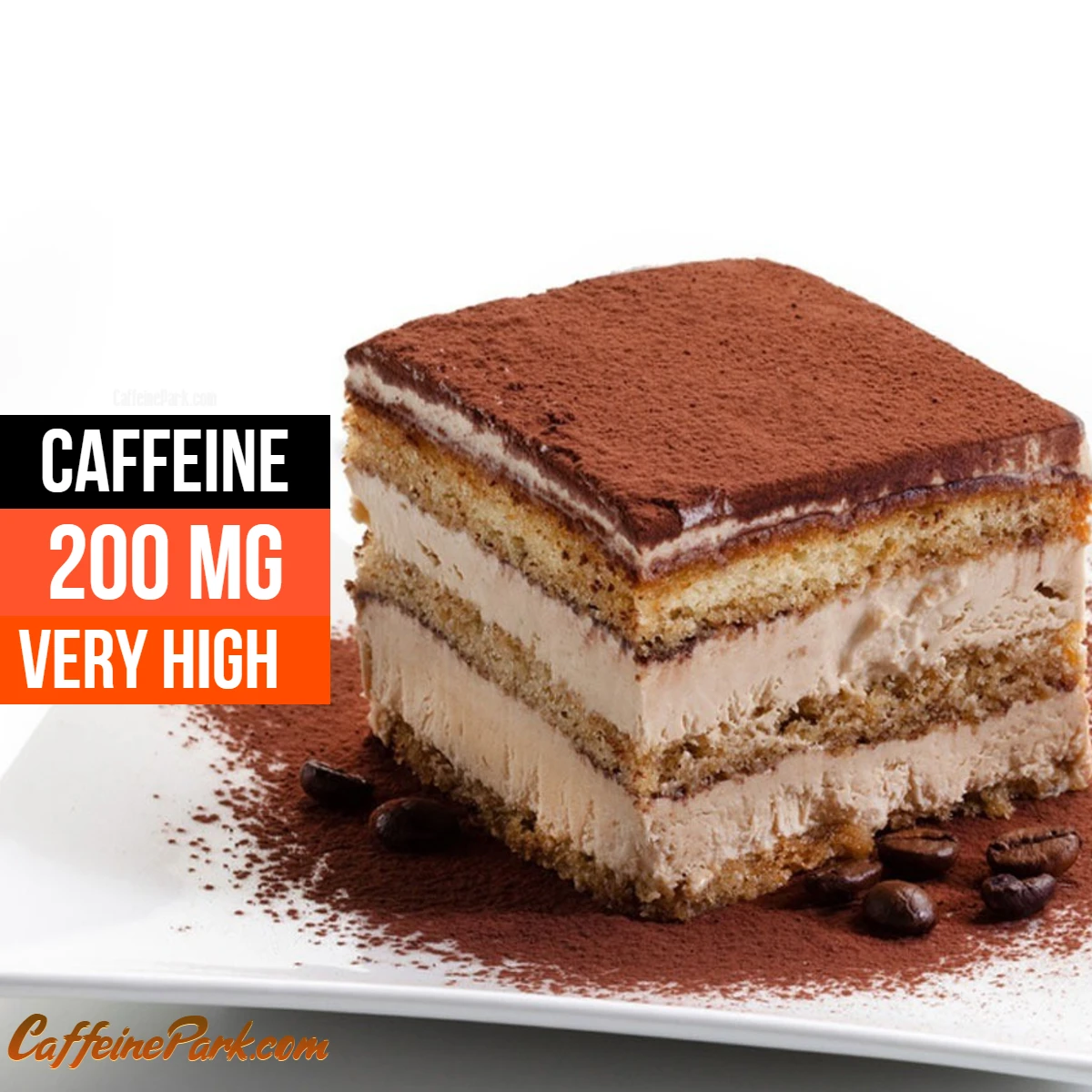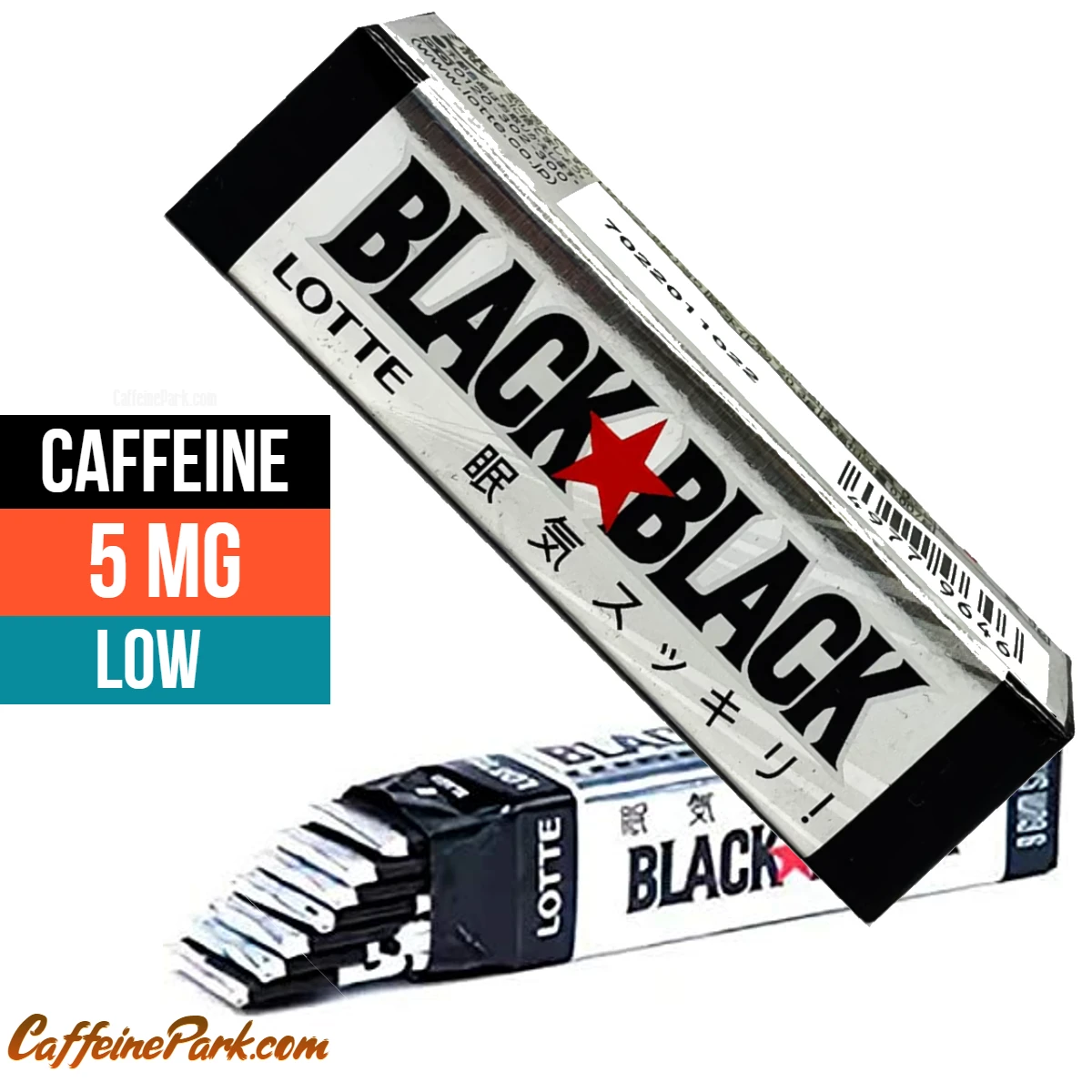
Tiramisu is a traditional Italian dessert that is made with ladyfingers (savoiardi) that are dipped in coffee, layered with a whipped mixture of eggs, sugar, and mascarpone cheese, and flavored with cocoa powder or chocolate shavings. The name “tiramisu” means “pick me up” or “cheer me up” in Italian, and is thought to have originated in the 1960s or 1970s in the region of Veneto. Have you ever found yourself savoring a slice of tiramisu and wondering about its caffeine content? Well, you’re in for a treat because we’re about to dive into the buzzworthy world of tiramisu and its caffeine content. So, grab a cup of coffee (or tea), and let’s get started!
Tiramisu, with its coffee-infused essence, owes its caffeinated punch to the beloved espresso. The caffeine content in tiramisu primarily depends on the amount of espresso used in its preparation. Traditionally, a small-sized tiramisu, measuring around 22 cm x 33 cm, calls for approximately 1.5 shots of espresso. This means that each slice of tiramisu contains an estimated 75 mg of caffeine. However, it’s essential to note that the caffeine content may vary slightly depending on factors such as the strength of the espresso and the specific recipe being used.
Now, before you take your next delightful bite of tiramisu, pause for a moment and appreciate the caffeine content that goes into this decadent treat. Whether you’re a coffee lover seeking an extra boost or simply curious about the composition of your favorite dessert, knowing the caffeine content adds an interesting layer to your tiramisu experience. So, go ahead, indulge in that heavenly tiramisu, and appreciate the subtle buzz it brings!
Does Tiramisu have caffeine?
Yes, the small size (22 cm x 33 cm) of tiramisu made with a decent espresso use about one 1.5 of espresso and contains 75 mg of caffeine.
| Serving size | Caffeine Amount | Caffeine strength |
|---|---|---|
| Small-size | 75 mg | MODERATE |
| medium-size | 100 mg | VERY HIGH |
- Caffeine Amount: 200 mg
- Caffeine strength: VERY HIGH
- Calories: 240
- Serving size: medium-sized (22 cm x 33 cm)
Factors Influencing the Tiramisu Caffeine Content
While the standard recipe for tiramisu calls for 1.5 shots of espresso, several factors can influence the caffeine content. Firstly, the strength of the espresso plays a significant role. A bolder espresso with a higher caffeine concentration will result in a tiramisu with a slightly higher caffeine content. Additionally, the size of the tiramisu can affect the overall caffeine intake. Larger portions may contain more espresso, increasing the caffeine content per serving. Lastly, if you’re enjoying tiramisu from a store or restaurant, it’s possible that their recipe or preparation method could differ, causing slight variations in caffeine content.
If you’re drinking espresso instead of drip coffee, your Tiramisu will contain more caffeine than if you were drinking drip coffee. Coffee beans also have a significant impact on the caffeine content. Some varieties of beans are higher in caffeine than others. For instance, Turkish coffee beans have less caffeine than Americano beans, which have less caffeine than Colombian beans. Finally, the size of the cup matters. A larger cup will give you more caffeine per serving than a smaller cup.
Usually and with general preparation, a medium-sized tiramisu should contain around 200 mg of caffeine From Coffee, Dark chocolate, and cocoa powder. Eating 1/8 of tiramisu means you will receive about 25 to 30 mg of extra caffeine. You could easily consume this amount of caffeine while drinking espresso at your favorite café!
Review
Tiramisu is a classic Italian dessert that has stood the test of time. Its layers of ladyfingers, coffee, eggs, sugar, and mascarpone cheese make for a rich, creamy, and flavorful dessert that is sure to please any palate. With so many variations on the traditional recipe, there’s a tiramisu out there for everyone to enjoy.
Some variations of the tiramisu recipe include the use of raw eggs, which could have the risk of salmonella. Some recipes also ask to use whipped cream instead of mascarpone cheese. Make sure you are using a safe version of the recipe.
Ingredient
The ingredients typically include:
- Ladyfingers (savoiardi)
- Espresso or strong coffee
- Eggs
- Sugar
- Mascarpone cheese
- Cocoa powder or chocolate shavings
- Marsala wine (optional)
Preparation
- The ladyfingers are briefly dipped in the coffee or espresso and then arranged in a single layer in a dish.
- The eggs, sugar, and mascarpone cheese are combined and beaten until light and fluffy and then spread over the ladyfingers.
- A second layer of ladyfingers is added on top, and the process is repeated until all the ingredients are used up.
- The tiramisu is then refrigerated for at least a few hours, or overnight, to allow the flavors to meld and the ladyfingers to soften.
Serving
- Tiramisu is usually dusted with cocoa powder or chocolate shavings on top before serving.
- It is typically served chilled as a dessert after a meal.
Variations
There are many variations of tiramisu that have been developed over the years, each with its own unique twist on the traditional recipe. Some variations include:
- Chocolate tiramisu: In this variation, cocoa powder or chocolate shavings are added to the egg and mascarpone mixture, giving the dessert a stronger chocolate flavor.
- Fruit tiramisu: Fresh fruit, such as strawberries, raspberries, or blueberries, can be added to the layers of ladyfingers and cream for a fruity twist on the classic recipe.
- Boozy tiramisu: Some recipes call for the addition of liqueurs, such as amaretto or Bailey’s Irish Cream, to the coffee mixture for a more adult-oriented dessert.
- No-bake tiramisu: Some recipes for tiramisu do not require the eggs to be cooked, which means that the dessert can be prepared without baking.
FAQs
The caffeine content in tiramisu can vary depending on factors such as the amount and strength of espresso used. However, a small-sized tiramisu made with approximately 1.5 shots of espresso typically contains around 75 mg of caffeine.
Yes, the caffeine content can vary slightly depending on the recipe and the strength of the espresso used. However, as a general guideline, a tiramisu made with 1.5 shots of espresso will provide an estimated 75 mg of caffeine.
Apart from the amount and strength of espresso, factors such as the size of the tiramisu and the brand of espresso used can also have a minor impact on the caffeine content. It’s important to note that these factors may lead to slight variations in the caffeine content.
Yes, if you’re looking for a tiramisu with less caffeine, you can explore recipes that use decaffeinated espresso or substitute espresso with other ingredients such as chocolate or vanilla. These variations can provide a similar taste and texture without the same level of caffeine.
The caffeine content in tiramisu, around 75 mg per serving, may provide a mild stimulant effect for some individuals. However, it’s important to remember that caffeine sensitivity varies among people, and the effects can differ based on factors such as individual metabolism and overall caffeine intake.
Yes, if you prefer to avoid caffeine altogether, you can opt for caffeine-free versions of tiramisu or recipes that exclude espresso as an ingredient. These alternatives allow you to enjoy the flavors and textures of tiramisu without the caffeine content.
Can I make tiramisu ahead of time?
Yes, tiramisu can be made ahead of time. In fact, it’s recommended that the dessert be refrigerated for at least a few hours, or overnight, to allow the flavors to meld and the ladyfingers to soften.
Can I freeze tiramisu?
Yes, tiramisu can be frozen. However, freezing may change the texture of the dessert, so it is best to eat the tiramisu within 2-3 months of freezing. When you want to serve it, thaw the tiramisu in the refrigerator for a few hours before serving.
Can tiramisu be made without alcohol?
Yes, tiramisu can be made without alcohol. The traditional recipe does not call for alcohol, but some variations do include the use of liqueurs like Marsala wine or Amaretto to add more depth of flavor.
Can I use whipped cream instead of mascarpone cheese for tiramisu?
Yes, you can use whipped cream instead of mascarpone cheese. Some people prefer the lighter texture of whipped cream, but keep in mind that mascarpone gives the tiramisu a creamy richness and a distinct flavor.
Can I make tiramisu gluten-free?
Yes, you can make tiramisu gluten-free by using gluten-free ladyfingers or by making homemade ladyfingers with gluten-free flour.
Can I make a vegan version of tiramisu?
Yes, it is possible to make a vegan version of tiramisu by using plant-based alternatives for the ingredients. For example, ladyfingers can be made with gluten-free flour, eggs, and mascarpone cheese can be replaced with a vegan-friendly alternative such as silken tofu, and plant-based milk can be used in place of dairy milk. There are a lot of variations and recipes for vegan tiramisu out there.
How long will tiramisu keep in the refrigerator?
Tiramisu will keep in the refrigerator for up to 3-4 days when stored in an airtight container. Beyond that, the texture and taste may not be as good.
How can I tell if my tiramisu has gone bad?
If tiramisu is left out of the refrigerator for too long or has been stored for more than a few days, it may spoil. Signs that it has gone bad include a sour smell, discoloration, or mold. In these cases, it is best to discard the tiramisu to avoid food poisoning.
How can I make tiramisu more flavorful?
To make tiramisu more flavorful, you can try adding extra vanilla extract or a splash of almond extract to the egg and mascarpone mixture, or you can use a flavored coffee or espresso. You can also add a bit of alcohol like marsala or amaretto to the coffee. A sprinkle of grated dark chocolate, cocoa powder, or chocolate shavings on top can also add more depth of flavor.
Can tiramisu make you awake?
Tiramisu does contain a tiny amount of caffeine. Caffeine will help wake you up if you’re still tired after dinner, but it won’t keep you awake all night. Tiramisu is usually served with coffee, but sometimes with other drinks like tea or hot chocolate. It will give you a buzz if you’re sensitive to caffeine. However, it won’t keep you awake at night like coffee might.
How strong is tiramisu coffee?
Tiramisu coffee is as strong as any other coffee you drink. You may add an extra tablespoon of sugar if you like your coffee sweetened. Use one teaspoon of instant coffee granules or two teaspoons of espresso powder instead of granulated sugar to get a stronger flavor.
Can kids eat tiramisu?
Although some versions are made with very few ingredients, others contain excessive amounts of alcohol. If your child doesn’t like alcohol, then there are plenty of other desserts that won’t contain any. Some recipes call for the addition of coffee or rum, which may not be suitable for young children. Taste it first before giving it to them.
Can I substitute coffee for espresso in tiramisu?
While espresso is traditionally made with strong coffee beans, there are many variations. Coffee can also be made with other ingredients, like milk or sugar, and even fruit. If your recipe calls for espresso, then you should use real espresso instead of instant coffee powder. The instant coffee powder may actually give your dessert an unpleasant aftertaste. You might also consider buying espresso at a specialty store
ingredients in Classic Tiramisu
FOR THE CREAM:
- 4 large egg yolks
- ½ cup/100 grams granulated sugar, divided
- ¾ cup heavy cream
- 1 cup/227 grams mascarpone (8 ounces)
FOR THE ASSEMBLY:
- 1 ½ cups good espresso or very strong coffee
- 2 tablespoons rum or cognac
- 2 tablespoons unsweetened cocoa powder
- About 24 ladyfingers (from one 7-ounce/200-gram package)
- 1 to 2 ounces of bittersweet chocolate, for shaving (optional)
Read More:
Contents
- Does Tiramisu have caffeine?
- Factors Influencing the Tiramisu Caffeine Content
- Review
- FAQs
- Can I make tiramisu ahead of time?
- Can I freeze tiramisu?
- Can tiramisu be made without alcohol?
- Can I use whipped cream instead of mascarpone cheese for tiramisu?
- Can I make tiramisu gluten-free?
- Can I make a vegan version of tiramisu?
- How long will tiramisu keep in the refrigerator?
- How can I tell if my tiramisu has gone bad?
- How can I make tiramisu more flavorful?
- Can tiramisu make you awake?
- How strong is tiramisu coffee?
- Can kids eat tiramisu?
- Can I substitute coffee for espresso in tiramisu?
- ingredients in Classic Tiramisu





